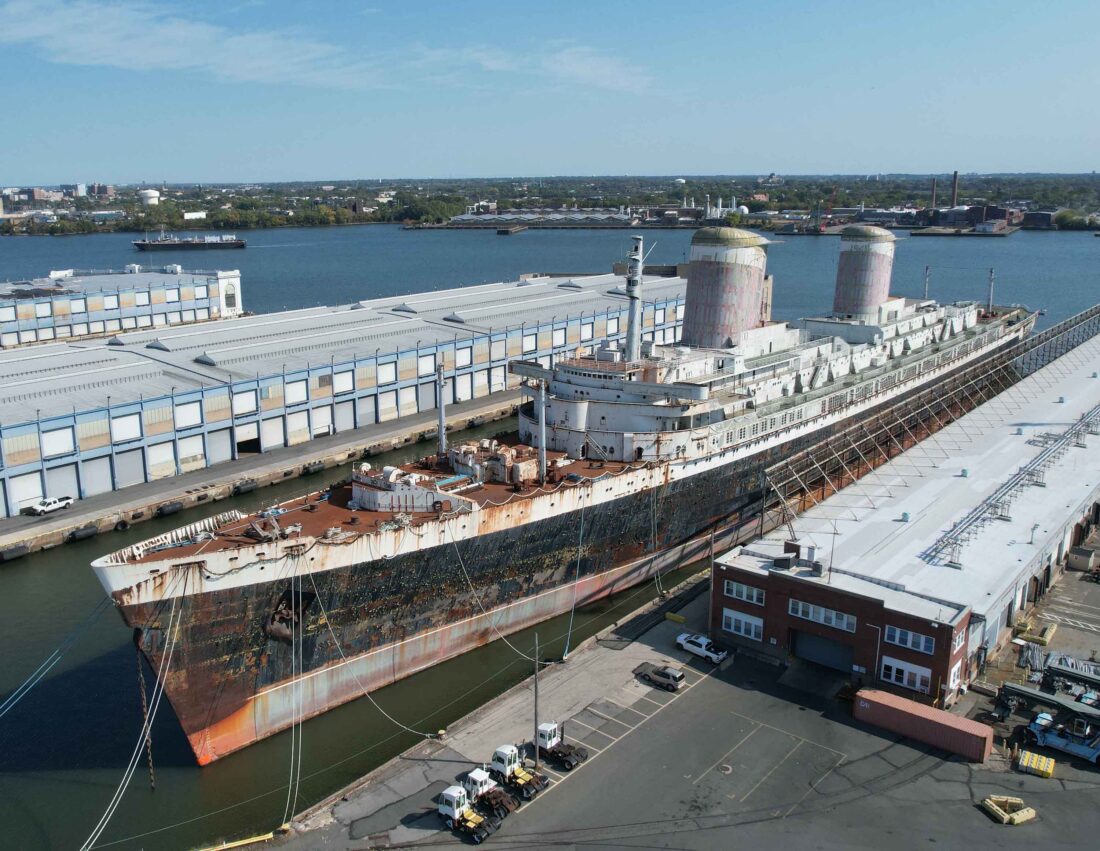In her glory days, a storied 1950s ocean liner called the SS United States carried presidents, heads of states, immigrants, artists, and celebrities alike, including Harry Truman, Dwight D. Eisenhower, Marlon Brando, Salvador Dalí, and Marilyn Monroe. The ship, which resides in Philadelphia, has been retired since 1969, but her next chapter is about to begin: Next fall, she will become the world’s largest artificial reef, sunk off the coast of Destin–Fort Walton Beach in Florida.

Any day now, she’ll begin a journey down the Delaware River, out to the Atlantic Ocean, and ultimately to Mobile, Alabama. There, the real work will ensue: It’s not easy to prepare a 1,000-foot-long, ten-story-tall vessel to become an eco-friendly reef—and that’s where Alex Fogg, Destin–Fort Walton Beach’s natural resources chief—comes in.
“This is the largest vessel that will have ever gone through this process,” the marine biologist says. “The sheer size alone has created a lot of red tape.” Beyond that, there are all of the elements that have to be removed and disposed of in an environmentally friendly way, including the paint, leftover fuel in the tanks, grease in hinges and doors, and wiring. Once all of that is done—a process that could take nearly a year—the SS United States will head to its final resting place.

To sink it, Fogg and his team will cut a number of holes right above the water line and then flood the vessel from another set of holes cut in the center. “As the boat starts to sink, those holes just above the water line will start to flood, and then it’ll go down very quickly after that,” he says. There’s an inherent sense of drama to the process, and Fogg will watch from alongside her. “The stern will make contact with the sea floor first. I would not want to be aboard—it’s a pretty violent thing.”
Once on the ocean floor, though, about 180 feet down, a new type of beauty will soon start to set in as algae, barnacles, and the first fish colonize the new structure. The waters off of Destin don’t harbor natural coral reefs, so structures like these provide habitat and refuge for all manner of marine life. Dolphins and sea turtles frequent artificial reefs. Grouper and snapper arrive as grown adults, while other species like damselfish and herring can spend their entire lives in a wreck’s nooks and crannies. And invasive lionfish will come, too, making them an easier target for spearhunters, a hobby that is growing in popularity alongside scuba diving in Destin.
The SS United States will join nearly fifty other ships that are helping make the area a destination for wreck diving—a pastime Fogg never tires of. “The first thing you see might be barracudas or big amberjacks and after that, thousands and thousands of little bait fish that are swimming around the wreck,” he says. “And then you start to see the shadow of the wreck itself.” To experience diving a ship this huge, and with this much history, will be all the more special, he feels.
On land, meanwhile, the SS United States Conservancy, which has safeguarded the ship since 2011, will help erect a museum to honor the ship’s history. After all, it still holds the record for the fastest transatlantic crossing, made on her maiden voyage in 1951, and she represents the pinnacle of maritime engineering in her time and a symbol of American strength during the Cold War years. “We’ve worked really hard to be respectful of her and her history,” says Jennifer Adams, the tourism development director of Destin–Fort Walton Beach. “We just feel that as a part of our reef system, she’ll have a new life and we can honor her legacy even more.”








